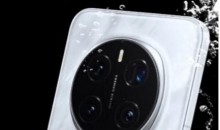The How’s and Why’s of Medical Imaging, Explained
Sep 28, 2019 08:18
The field of medicine has been growing by leaps and bounds. This means that it’s gotten much easier to understand and diagnose medical problems, especially those related to difficult areas like the brain or the spinal cord.
Medical imaging isn’t magic, even if certain types allow us to read people’s thoughts. No, it’s pure science, developed by intelligent humans. And that in itself makes it more wondrous than magic.
There are several types of medical imaging. Some of them can map out bones, others, like the NeuroQuant at intermountain medical imaging, can monitor brain atrophy.
All the types of imaging have different uses but one fact is common to all: they are almost magical in how they help doctors diagnose and treat diseases and disorders.
The Ultrasound
This method of imaging is done by harnessing sound waves. Think of this like sonar waves, which many animals and machines use to communicate and/or calculate distances between objects underwater.
Whales are particularly known to use this type of imaging to find food and communicate. This is what happens in an ultrasound where an ultrasound machine creates images by sending sound waves into the body.
These waves bounce off tissue and organs to show doctors a complete picture. Ultrasounds are commonly used during pregnancies, to determine how far along the fetus has progressed.
Radiography
This type of imaging uses electromagnetic radiation. You probably know the X-Ray. If you’ve ever had a twisted ankle or a broken bone, you would have needed to get one of these. An X-Ray beams radiation inside your body and the results are captured onto a film.
This shows a high contrast black and white image of bones and skin, where doctors can easily pinpoint a break or fracture. This is not a painful procedure and is quite common in most types of medicine.
MRI
Magnetic Resonance Imaging (MRI) involves an MRI scanner that contains a massive magnet. This machine creates images using magnetic fields and radio waves.
An MRI is normally used for brain scans and spinal injuries. It allows doctors to accurately see what’s going inside someone’s head, if not their mind.
Why Medical Imaging
If the list hasn’t convinced you, medical imaging is not just an option anymore, but a necessity in medicine. Doctors are now able to see and diagnose illnesses or conditions that previously went undiagnosed.
A lot of times, this is useful in detecting certain illnesses early which means that patients can be treated faster. While medical imaging is not the only solution to a complete diagnosis, it’s certain that these tools and this hi-tech method help.
Risks
Of course, there are risks involved with any procedure. For example, X-Rays are done using radiation and this might be harmful to the body in large repeated doses.
However, the chance to diagnose and understand is infinitely better than risking an active illness or condition. This is why people still opt for medical imaging instead of staying in the dark.







































































